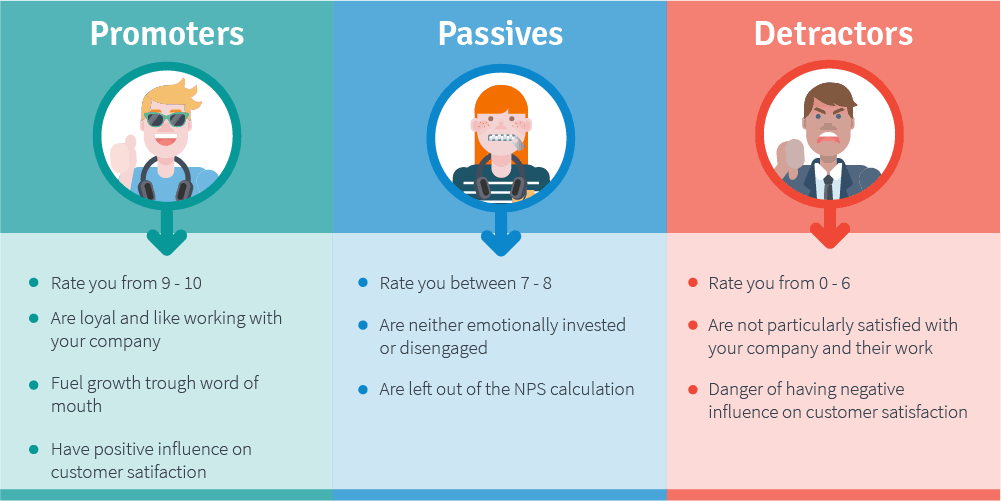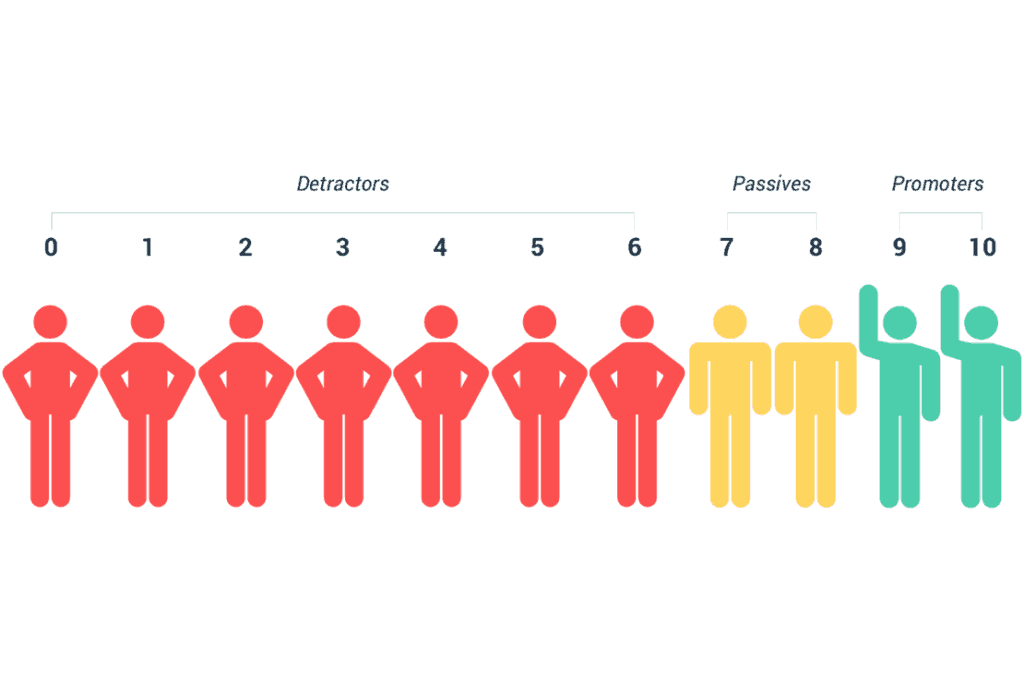What is a Net Promoter Score?
Most businesses recognize the need to track metrics and KPIs that lead up to a sale. Organizations monitor their leads, count new conversions and opportunities, keep track of web traffic, sales presentations and other activities, all to help forecast future revenue and inform strategic decision-making.
While pre-sale metrics have always been important, it is only recently that a large number of businesses have developed metrics for measuring what happens after a sale.
The ultimate goal of business extends past revenue and sales growth – businesses should try to satisfy their customers, and not just because it feels good and gives meaning to their work.
Customers that are dissatisfied with your product or service may complain to your customer service department or to their family and friends, creating a negative image of your brand. They may describe their negative experience in online forums or on social media, and most times, they’ll never buy from you again.
Businesses that recognize the negative impacts of dissatisfied customers have started to focus more on customer experience and implemented new techniques for measuring customer satisfaction and loyalty following a purchase. One of these KPIs is known as Net Promoter Score (NPS).

How Does Net Promoter Score Work?
- Net promoter score is a metric that businesses use to measure customer loyalty.
- A business calculates its net promoter score by surveying its customers following a customer acquisition, usually a sale
- The survey for measuring net promoter score has only one question on it: “On a scale of one to ten, how likely are you to recommend this company’s product or service to a friend or colleague?”
- The survey respondent indicates their response by circling a number between one and ten.
- The business collects survey results and analyzes them to determine its net promoter score
- Net promoter score can act as a KPI for customer satisfaction or brand loyalty, helping executives or managers develop strategies for improving the customer experience
Net Promoter Score: Three Customer Classifications
When a customer responds to a net promoter score survey, they are grouped into one of three classifications based on how they responded to the survey question:
Detractors
Customers who rate their likelihood of recommending a product or service between 1 and 6 belong in the category of detractors. These customers were dissatisfied with some aspect of their experience and it is highly unlikely that they will purchase again. They may also complain about their experience with friends, family or on social media.
Passives
Passives are just satisfied with the product or service they received from your organization – these are the customers who answered the survey question with a 7 or 8. Passive customers probably won’t spread negative word-of-mouth about your company, but they won’t be singing your praises either and they may be prone to switching brands if presented with the right offer.
Promoters
Promoters are those customers that respond to the survey question with a 9 or 10. They love the company’s product and services, and their positive experience is helping them build a personal connection to the brand. Promoters demonstrate brand loyalty and are highly likely to recommend the product or service to at least one friend or family member.

Calculating Net Promoter Score
Once the survey responses have been grouped into categories, organizations can go ahead and calculate its net promoter score. NPS scores range from -100 to +100 and are calculated by subtracting the percentage of total respondents that are detractors from the percentage of total respondents that are promoters. Let’s look at some example calculations based on a survey with 100 respondents.
Survey 1:
59 Promoters, 31 Passives, 10 Detractors. NPS = 59 – 10 = 49
Note that the number of passives does not figure into the calculation, but it does affect the numbers that are used.
Survey 2:
89 Promoters, 1 Passive, 10 Detractors. NPS = 89 – 10 = 79
Survey 2 has the same number of Detractors as in Survey 1, but with fewer passive customers and more promoters, the NPS score is higher.
Survey 3:
22 Promoters, 33 Passives, 45 Detractors. NPS = 22 – 45 = -23
Negative values for NPS are possible when a business has more detractors than promoters.
Alternatives to Net Promoter Score for Measuring Customer Satisfaction
Net Promoter Score is one way of quantifying customer experience and loyalty – but it is not the only one! Here are three other methods that organizations are using to monitor customer satisfaction.
Customer Satisfaction Score (CSAT)
Some organizations choose to measure customer satisfaction by asking about it directly, usually following an important customer life cycle moment or a customer service interaction. A CSAT survey typically asks customers “How satisfied were you with the product you purchased?” or “How satisfied were you with the service you received today?”. The exact wording of the question depends on the interaction that preceded it.
Organizations can choose which scale to use for CSAT, usually either a 1-to-5 point or a 1-to-10 point scale.
Customer Effort Score (CES)
An article in the Harvard Business Review recently argued that the costs of exceeding customer expectations on a consistent basis were not justified by the payoffs and that businesses should focus on making it easy for customers to get what they want.
This insight could explain why more businesses are using CES to monitor customer sentiments. A CES survey asks “How easy was it to get your issue handled today?” or “How easy was it to make your purchase on our website today?” Respondents are prompted to rate the overall effort level on a 5-, 7- or 10-point scale.
According to Gartner, the effort is the strongest driver to customer loyalty. The firm says that 96% of customers who experience high-effort interactions become more disloyal, compared to just 9% of those who experience a low-effort interaction.
Social Media Monitoring
Organizations of all types are increasingly adopting social media monitoring tools to help them monitor public sentiment and track down dissatisfied customers on social media. Social media has created a broad platform for dissatisfied customers to share their experiences, but it also creates an opportunity for brands to address customer issues directly and demonstrate a commitment to customer service in a public forum.

Why Does Directive Consulting Measure Net Promoter Score?
Net promoter score asks how likely a customer would be to recommend the product and service to their family and friends, but we can actually learn a lot by measuring NPS.
If someone responds to an NPS survey with a 9 or 10, we can infer that their interaction with the business met their expectations and if someone is likely to recommend the business, they are also likely to keep subscribing to the service or purchase the product again in the future. In this way, NPS acts as a proxy measurement for customer satisfaction and the likelihood of repurchase.
Bain & Co., the company that originally introduced the NPS metric, has discovered that NPS can account for between 20% and 60% of a company’s growth rate, and that industry-leading companies frequently have NPS scores that more than double their competitors. These figures reflect the importance and predictive power of NPS as a key performance indicator.